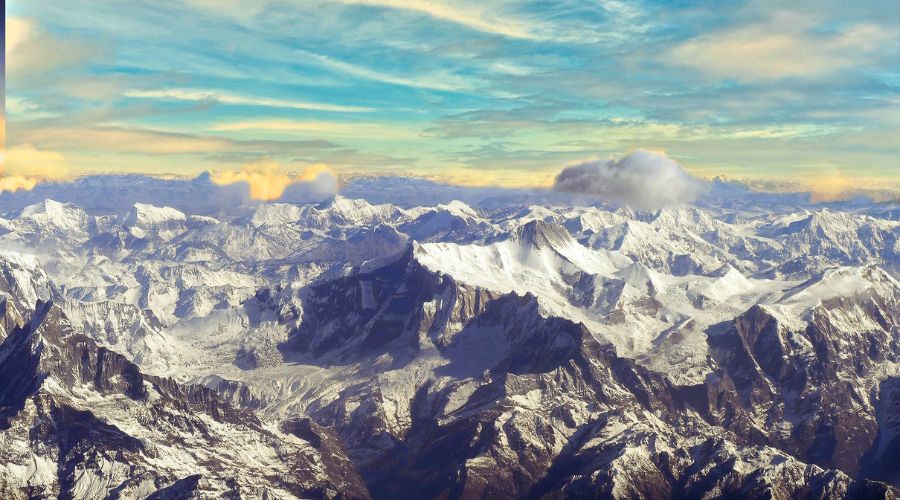
Himalayan Mountaineering: Everything you need to know

Himalayan Mountaineering: Everything you need to know
swotah travel
3932
28, 11 2023
Himalayan Mountaineering Historical Overview
The history of Himalayan mountaineering is a rich tapestry woven with courage, ambition, and the relentless human spirit to conquer the unknown. This journey into the heart of the highest mountain range on Earth began in the early 19th century when the Himalayas were more a mythical realm than a mountaineering destination.
The Early Days
Initially, the Himalayas were a territory for explorers and surveyors, not climbers. During their rule in India, the British initiated the Great Trigonometrical Survey in the early 1800s. This led to the discovery and measurement of many Himalayan peaks, including Everest, known then as Peak XV. It wasn't until the late 19th and early 20th centuries that the idea of climbing these peaks for sport began to take root.
The Pioneers
One of the first significant attempts to scale a Himalayan peak was made in 1895, when British mountaineer Albert F. Mummery led an expedition to Nanga Parbat, one of the deadliest mountains in the world. Though unsuccessful and tragic (Mummery and two Gurkhas lost their lives), this expedition marked the beginning of serious mountaineering attempts in the Himalayas.
The Quest for Everest
The real allure of Himalayan mountaineering, however, was epitomised by Mount Everest. Early attempts on Everest began in the 1920s. George Mallory, who famously quipped, “Because it's there”, in response to why he wanted to climb Everest, was part of these initial expeditions. Mallory's disappearance on Everest during the 1924 expedition remains one of mountaineering's greatest mysteries.
The Historic Ascent
A pivotal moment in Himalayan mountaineering history occurred in 1953. It was the year when New Zealander Sir Edmund Hillary and Nepalese Sherpa Tenzing Norgay achieved what had been deemed impossible – they reached the summit of Mount Everest on May 29, 1953. Their successful ascent was a triumph over the mountain and a symbol of human endurance and collaboration transcending nationalities and cultures.
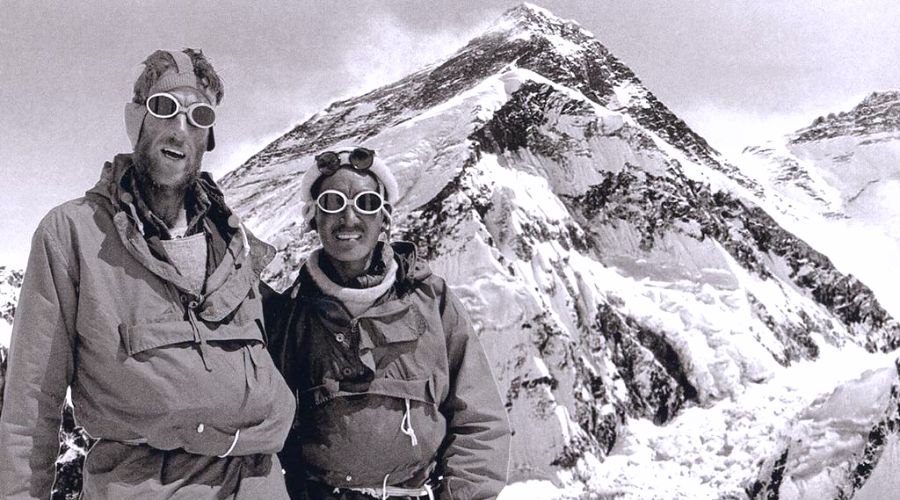
Sir Edmund Hillary, an experienced climber, and Tenzing Norgay, who had immense knowledge of the Himalayan region, became international heroes. Their expedition, led by Colonel John Hunt, was a well-organized endeavour that combined meticulous planning, state-of-the-art equipment for the time, and an understanding of the mountain environment.
Legacy and Influence
The successful ascent of Everest opened the floodgates for Himalayan mountaineering. It was no longer an insurmountable dream but a challenging reality that many climbers aspired to achieve. This historic event also brought global attention to the Sherpa community, whose knowledge of the Himalayas was invaluable to the success of many subsequent expeditions.
Significance in Modern Mountaineering
In the years that followed, mountaineering in the Himalayas evolved rapidly. Technological advancements, a better understanding of high-altitude physiology, and an increasing number of skilled climbers from around the world led to more peaks being conquered and new routes being established.
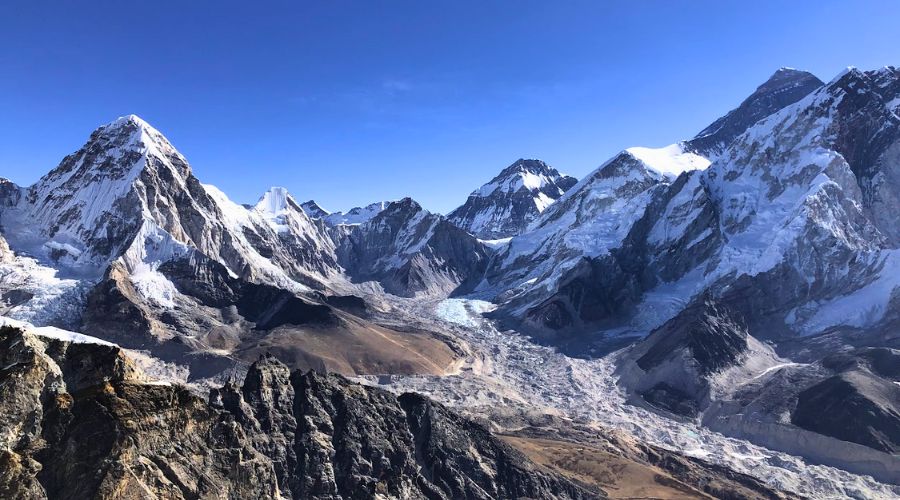
The history of Himalayan mountaineering is not just a record of physical conquests; it's a story of human ambition, the relentless pursuit of dreams, and a testament to the extraordinary capabilities of the human spirit. Each expedition, whether successful or not, added a new chapter to this fascinating history, laying the foundation for future generations of mountaineers.
The Himalayas, home to the world's highest peaks, have played a pivotal role in shaping the landscape of modern mountaineering. Their impact is evident not only in the techniques and equipment developed for high-altitude climbing but also in the enduring allure they hold for climbers globally.
Shaping Techniques and Equipment
The extreme conditions of the Himalayas have been a catalyst for innovation in mountaineering techniques and equipment. Early expeditions faced immense challenges due to inadequate gear and limited knowledge of high-altitude climbing. Over the years, these challenges have driven the development of specialised equipment and techniques.
One of the most significant advancements was in clothing and gear. The need for protection against the harsh Himalayan weather led to the development of down jackets and sleeping bags, which have become staples in mountaineering gear. Similarly, improvements in oxygen systems, climbing hardware, and communication devices can be directly attributed to the demands of Himalayan climbing.
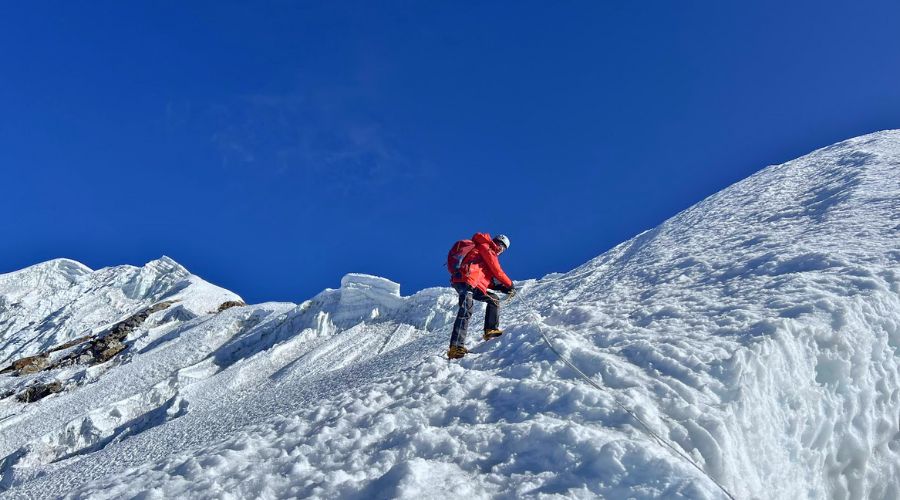
Techniques for acclimatisation, crucial for high-altitude mountaineering, were also refined in the Himalayas. Strategies such as "climb high, sleep low" and the use of staged ascents with established camps were perfected in these mountains, allowing climbers to ascend to extreme altitudes safely.
Attracting Climbers Globally
The Himalayas continue to be a magnet for climbers from all corners of the world. The allure lies in the challenge of scaling some of the highest peaks on Earth and the unique cultural and spiritual experiences these mountains offer. Each Himalayan peak, from Everest to the less frequented summits, has its own character and set of challenges, attracting a wide range of mountaineers, from seasoned veterans to enthusiastic amateurs.
The region's diverse climbing opportunities – including technical climbs, long treks, and relatively accessible peaks – make it a perfect training ground for various levels of mountaineering skills. Additionally, the Himalayas are often seen as the ultimate test of a climber's ability, resilience, and endurance, making a successful ascent a highly coveted achievement in the mountaineering community.
Moreover, the Himalayas have a deep spiritual significance. Many climbers are drawn to these mountains for their majestic beauty and the sense of tranquillity they offer. The rich cultural heritage of the Himalayan regions and their people adds another layer of attraction, making an expedition here as much a cultural journey as a climbing challenge.
Influencing Mountaineering Culture
The experiences, stories, and legends from Himalayan expeditions have contributed significantly to the global mountaineering ethos. The tales of triumph and tragedy, the camaraderie formed on these slopes, and the lessons learned have enriched the broader narrative of mountaineering. They have inspired countless individuals to take up the sport and have fostered a deeper appreciation for the mountains and the environment.
The Himalayas: A Geographical Marvel
The Himalayas stand as one of the most majestic and geographically complex mountain ranges in the world. This section explores the vast geographical layout of the Himalayas, highlighting their diverse topography and unique climatic conditions that pose both challenges and allure to mountaineers.
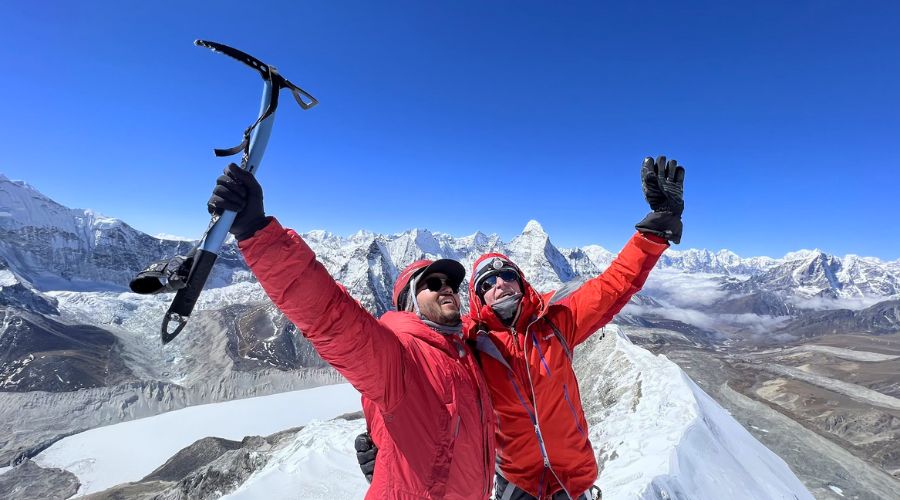
Geographical Layout
Vast Spread Across Countries
The Himalayan range extends over five countries: Bhutan, India, Nepal, China (Tibet), and Pakistan, covering an impressive arc of about 2,400 kilometres (1,500 miles). This expansive range is home to over 110 peaks rising to elevations of 24,000 feet (7,300 meters) or more, making them a formidable presence on Earth.
Diverse Topography
The topography of the Himalayas is varied and complex. It is not just a range of high peaks but a system of parallel mountain ranges interspersed with valleys and plateaus. The southern slopes are steep and heavily forested, while the northern slopes are more gradual. Notable valleys like the Kathmandu Valley in Nepal and the Indus Valley in Pakistan are significant for their cultural and historical importance.
The range also hosts some of the world's largest glaciers outside the polar regions. These glaciers are crucial sources of fresh water for the rivers that originate in the Himalayas. Rivers like the Ganges, Indus, Brahmaputra and their extensive tributary networks support the livelihoods of hundreds of millions of people in South Asia.
Unique Climatic Conditions
Extreme Weather Conditions
The Himalayas create their own weather system, which is unique and highly unpredictable. The range acts as a barrier preventing the cold Central Asian katabatic winds from blowing south into the subcontinent and blocking the warmer monsoon winds from the Indian Ocean from moving northward. This results in drastically varying climates from the foot to the peak of the mountains.
The Monsoon Season
The monsoon season, typically from June to September, profoundly impacts mountaineering expeditions. The southern slopes of the Himalayas receive heavy rainfall during this period, making climbing dangerous due to the risks of landslides, avalanches, and flooding. The northern slopes, in contrast, are in a rain shadow and receive less precipitation but are not devoid of risks.
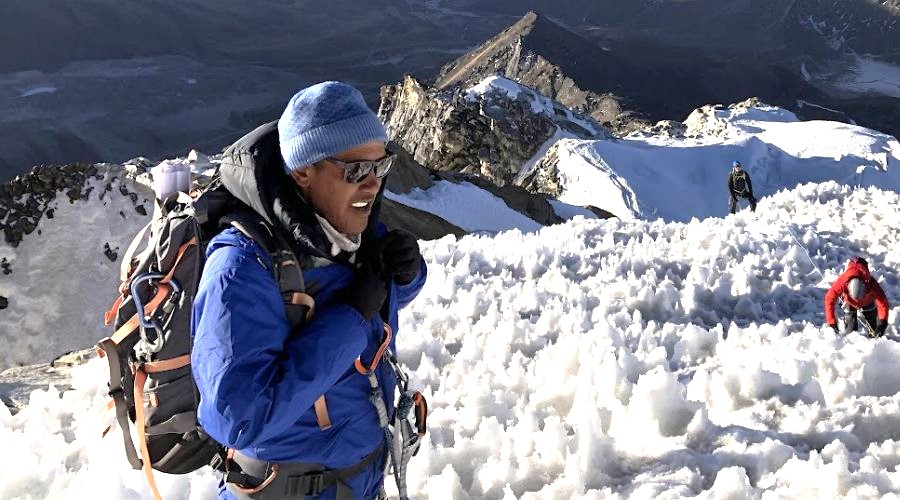
Impact on Mountaineering
These extreme weather conditions and the monsoon season play a crucial role in planning and executing mountaineering expeditions. Climbers need to be highly aware of the weather patterns and plan their ascents during windows of relatively stable weather. Most expeditions are scheduled in the pre-monsoon period (April to early June) or post-monsoon period (late September to November) when conditions are comparatively safer.
The climatic conditions also affect acclimatisation, the risk of avalanches, and the overall difficulty of the climb. Even outside the monsoon season, the weather can change rapidly, with sudden storms and temperature drops being common, adding to the challenges faced by mountaineers.
Major Peaks of the Himalayas
The Himalayas are home to some of the world's most formidable and revered mountains, each presenting unique challenges and attracting climbers with their distinct allure. This section focuses on Mount Everest, the range's crown jewel, and other significant peaks like K2, Lhotse, and Makalu.
Everest: The Crown Jewel
Mount Everest, rising 8,848.86 meters (29,031.7 feet) above sea level, is the highest point on Earth. The allure of standing at the top of the world has drawn thousands of climbers, but the ascent is fraught with extreme challenges. Climbers face severe altitude sickness, unpredictable weather, and the treacherous Khumbu Icefall. The mountain's "Death Zone" above 8,000 meters is particularly notorious, where the thin air and harsh conditions push human endurance to its limits.
Statistics on Summits and Fatalities
Till July 2022, 6098 individuals have reached the summit. In records, there has been a total of 11,346 successful summits by these individuals. . However, the mountain has also claimed over 330 lives, with most fatalities caused by avalanches, falls, exposure, or health problems related to the extreme altitude. The increasing number of climbers in recent years has raised concerns about overcrowding and its impact on safety and the mountain's fragile environment.
K2 and Other Notable Summits
K2: The Savage Mountain
K2, the world's second-highest peak at 8,611 meters (28,251 feet), is often considered the most challenging and dangerous mountain to climb. Located on the China-Pakistan border, K2's steep, icy slopes and unpredictable weather make it far more treacherous than Everest. Unlike Everest, there are no "easy" routes up K2, and its fatality rate is significantly higher.
Lhotse and Makalu: Formidable Companions
Lhotse, the world's fourth-highest mountain at 8,516 meters (27,940 feet), is connected to Everest via the South Col. Its proximity to Everest often overshadows its own formidable challenge, with a steep and technical route.
Makalu, standing at 8,485 meters (27,838 feet), is the fifth-highest mountain in the world and is known for its isolated location and pyramidal structure. Makalu is notorious for its harsh weather conditions and steep pitches, making it a challenging climb even for the most experienced mountaineers.
These Himalayan giants, each with their unique challenges and dangers, continue to captivate and challenge the mountaineering community. Their allure lies not just in their height but in the extreme conditions and the tests of human endurance and skill they offer. For many climbers, these peaks represent the ultimate in adventure and exploration, a testament to the indomitable human spirit's quest to reach higher and explore the unknown.
Famous Expeditions and Mountaineers
The history of Himalayan mountaineering is punctuated by a series of landmark expeditions and legendary climbers whose achievements have significantly shaped the sport. This section highlights some of the most famous expeditions and profiles notable mountaineers for their extraordinary contributions.
Historical Expeditions
The 1953 Everest Expedition
Undoubtedly, the most celebrated expedition in Himalayan mountaineering is the 1953 British Mount Everest Expedition. Led by John Hunt, it culminated in Sir Edmund Hillary from New Zealand and Tenzing Norgay, a Sherpa of Nepal, reaching the summit on May 29, 1953. This was the first confirmed ascent of the world's highest peak and marked a monumental achievement in mountaineering history.
The First American Ascent of Everest, 1963
The American Mount Everest Expedition in 1963 was another significant milestone, with James Whittaker becoming the first American to summit Everest on May 1, 1963. This expedition also saw the first successful American traverse of the mountain, completed by Thomas Hornbein and Willi Unsoeld, via the treacherous West Ridge.
The 1975 First Female Summit
In 1975, Junko Tabei of Japan became the first woman to summit Everest. This expedition was remarkable not only for Tabei's individual accomplishment but also for promoting women's participation in high-altitude mountaineering, a sport then largely dominated by men.
Notable Climbers and Their Achievements
Reinhold Messner
Reinhold Messner, an Italian mountaineer, is renowned for being the first person to climb all fourteen "eight-thousanders" (mountains over 8,000 meters above sea level), and he did so without supplemental oxygen. His solo ascent of Everest in 1980, without oxygen, marked one of the greatest feats in mountaineering history.
Edmund Hillary and Tenzing Norgay
Sir Edmund Hillary and Tenzing Norgay became household names after their historic ascent of Everest. Their achievement symbolized the pinnacle of human endurance and opened up the realm of high-altitude mountaineering to the world.
Krzysztof Wielicki and Leszek Cichy
These Polish climbers are celebrated for their winter ascent of Everest in 1980, a feat that had never been accomplished before. Their success opened a new chapter in mountaineering, proving that climbing the world's highest peaks was possible even in the harshest conditions.
Kami Rita Sherpa
Kami Rita Sherpa, hailing from Thame in Khumbu, has set a remarkable record by summiting Mount Everest for the 28th time, the highest number of ascents of the world's tallest peak, with his latest climb occurring shortly after a successful ascent on May 17, 2023. This achievement, part of his 40th climb of an 8000-meter mountain - another record in itself, comes after his initial Everest summit in 1994. His feat was briefly matched by Pasang Dawa (Padawa) Sherpa from Pangboche, who also reached the Everest summit for the second time this season on May 22, 2023 and was again surpassed by Kami Rita's unprecedented ascent.
Beginner-Friendly Himalayan peaks
-
Mera Peak
-
Yala Peak
-
Island Peak
-
Pokalde Peak
-
Lobuche West
-
Himlung Himal
-
Mt. Manaslu
1. Meera Peak
Mera Peak is located in the Sagarmatha region at an altitude of 6,476 m (21,247 ft). It is known to be the highest trekking peak of Nepal. There are different routes to the summit of Mera Peak suitable based on one's experience. For the beginners or the moderately experienced ones, the classic route is perfect. According to the Alpine Grading System the Mera Peak. For advanced climbers/mountaineers, the west-face and south-face routes are better options as they are more technical.
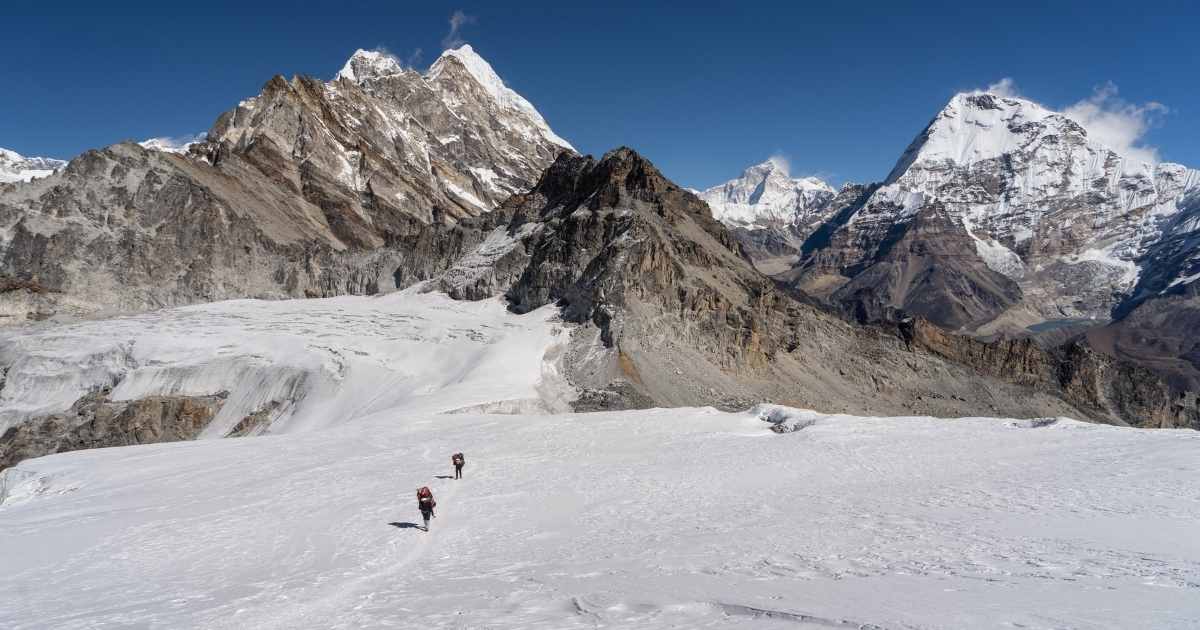
Its difficulty is PD graded which means slightly easy After about 15 days to 25 days, with 2 days dedicated to summit from the base. one completes climbing the peak and is blessed with the view of five of the 8000 m + snow-capped mountains around namely Mt.Lhotse, Mt. Kanchenjunga, Mt. Everest, Mt. Cho Oyu, and Mt. Makalu. Spring and Autumn are the best seasons for climbing Mera Peak specifically months: March, April, end of September, October, and November.
2. Yala Peak
Yala Peak lies in the Langatang Himlaya range. The elevation of this beautiful peak is 5700 m / 18700 ft. The entire mountaineering from the Yala Peak base camp to the summit is technical skill free, only while on the final expedition does one need to use a fixed rope ladder and crampons. Yala Peak is perfect for the newbies to kick start their mountaineering journey. AlpineGrading System has graded Yala Peak F which means facile/ easy.
Highlights of the Yala Peak expedition are the surreal views of the Langtang Valley, red panda, snow leopard, the highest mountain in Tibet (Shishapangma), etc. From the base camp to the summit, the total days spent in ascending is about 2 days to 3 days long. The most preferred time around the year to climb Yala Peak is March, April, October, and November.
3. Island Peak
Island Peak is slightly more challenging than Mera Peak yet it is perfectly beginner-friendly. The elevation of this peak is 6189 m / 20306 ft. Locally known as Imja Tse, the Island peak rises up from the Lhotse Glacier. It is graded 2b on the difficulty scale. One needs to get familiar with using an ice axe, crampons, and rope ladders before opting for the ascend. Island Peak’s highlight is mountaineering amidst the beautiful Sherpa village accompanied by the views of Mt. Lhotse, Mt. Ama Dablam, Mt. Everest, and Mt. Nuptse.
The complete mountaineering process of the Island peak is approximately 10 days to 15 days long with 2 days dedicated to the actual expedition. Early spring months and October are the safest times around the year to climb the Island Peak.
4. Pokalde Peak
Pokalde lies in the Everest region and is known to be one of the easiest peaks to climb in Nepal. It lies in the South of the Mt. Everest (12 km away). The elevation of the Pokalde peak is 5806 m / 19049 ft. Mountaineering here does not require a complex technical skill set just knowing how to work with a rope ladder is enough. Pokalde is the most beginner friendly peak one finds in Nepal. Despite being easy, it is one of the most visually appealing mountaineering as it flaunts Mt. Ama Dablam, Mt.Pumori, Mt.Makalu, and the entire Mahalangur Himalayan range. To mountaineer the Pokalde Peak it takes about 13 days to 18 days and one day is enough for the actual summit climbing. Avoid months of Winter as Summer for mountaineering expeditions of Pokalde Peak.
5. Lobuche west
Lobuche West is located in the Everest region of Nepal. It is 6119 m / 20075 ft high. Lobuche West is one of the easy climbs and good for the starters. There are very little to no technical skills needed. However, one needs to be in good shape, have good stamina, and have knowledge of proper acclimatization. Mountaineering at Lobuche Peak is harder than mountaineering at Island Peak and Mera Peak.
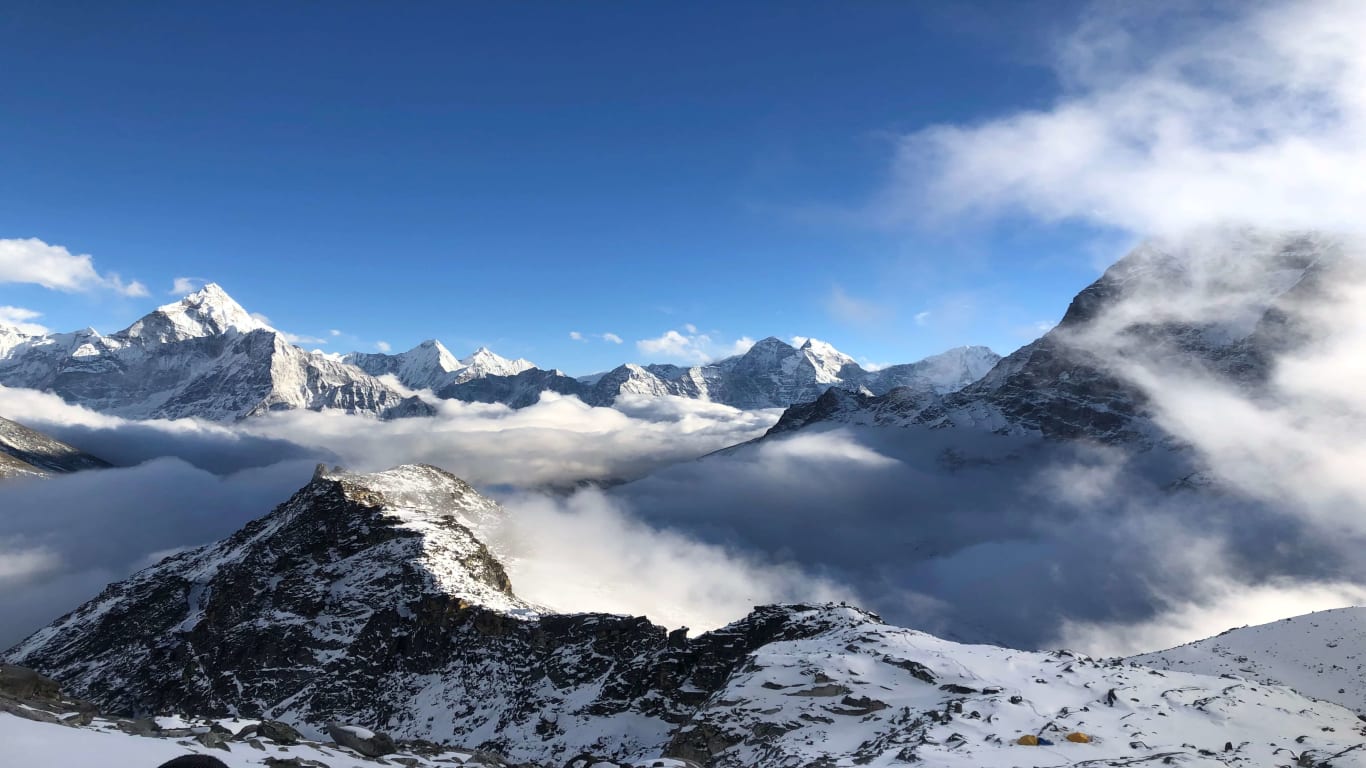
The major highlight of the Lobuche expedition is the view of Mt. Nuptse, Mt. Lhotse, Mt.Pumori, and Mt. AmaDablam from the summit. From Lobuche high camp a one day climb worth 9 hours to 10 hours is to be at the top. March, and April of the Spring season and October and November of the Fall are good for Lobuche West mountaineering.
6. Himlung Himal
Himlung Himal lies in the Manaslu region of Nepal, to the northeast of the Annapurna range. It has a total elevation of 7140 m / 23430 ft. Himlung Himal mountaineering does not require however you do need to be familiar with using fixed ropes, and climbing gear, know fixed line techniques, and use crampons. However, do not consider Himlung Himal to be beginner friendly just yet, one needs to have moderate experience in mountaineering beforehand. Even though it does not need technical skills it is a strenuous climb and more physically challenging than all the mountaineering spots mentioned above. From the Himlung Himal base camp mountaineering process to the summit is 11 days to 15 days long. Spring season and Autumn season are preferred for the Himlung’s expedition.
7. Mt. Manaslu
Now let's get to the 8000 m + mountaineering in Nepal. Mt. Manaslu is the 8th highest mountain in the world with an elevation of 8163 m / 26781 ft. It has six different routes in total to the summit. Among the 8000ers the Manaslu is easy to mountaineer yet it does require complex technical skills and ample previous experience in climbing other beginner friendly mountains. One needs to know ice climbing and rock climbing, be familiar with ice axes, crampons, and rope work, practice crevasse rescue, avalanche safety, and navigation.
Generally, Manaslu is chosen by climbers around the world as a preparation expedition for the harder 800ers like Mt. Everest, Mt.Kanchenjunga, etc. From the base camp to the summit of the Masnalu, it takes a total mountaineering of 20 days to 27 days. Climbing Mt. Manaslu from June to August and December to February is extremely dangerous, remaining moths March to April and August to October are suitable for mountaineering.
Some tips to make your mountaineering experience easier and safer:
-
First and foremost prepare your body physically, do breathing exercises to keep your lungs healthy, build up your stamina, and work on your endurance.
-
Take professional mountaineering classes they get you used to technical gears and teach the proper way to use them.
-
Be pro at using navigation tools cause what could be worse than getting lost in the great Himalayas?
-
While mountaineering never push yourselves, If your body feels exhausted rest as much as you need, and know how much you can withstand.
-
Carry climbing suits to keep you warm and choose mountaineering shoes very carefully.
-
Since the network is very poor, most of the mountain areas carry other communicative devices like two way radio, satellite phones, Personal Locator Beacon(PLB), etc. This ensures you are always connected with your other teammates and decreases the chances of getting lost.
-
Even in the safest seasons make sure to check the weather forecast to avoid possible encounters with snow storms and avalanches. Know how to deal with these natural calamities for the worst-case scenarios.
-
Look out for the permits and other documents needed before opting to climb any mountain.
-
Mountaineering is better and safer if done in a group. So make a group with experienced/professional climbers who know mountains like the back of their hands.
-
Eat food rich in nutrients that give you energy for a longer time and always stay hydrated.
NEWSLETTER SIGNUP
Sign up to receive our trip ideas and travel offers!
Get updates and Exclusive Offers up to 20% Discount








